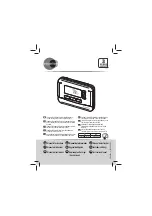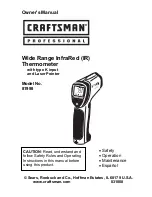
BAC-10000 Series
25
Operation Guide, Rev. J
For
definitions
of various terms in this
document, refer to the award-winning
pocket-sized
Green Building and Con-
trols Glossary (SB-046)
. A hyperlinked
online version can be downloaded from
the Brochures section of KMC Controls
web site,
www.kmccontrols.com
.
Some
of the more important glossary terms
for this document are included on this page:
Definitions of Terms
Air Handling Unit (AHU)
—An HVAC system compo-
nent that conditions and delivers air through the
system. It typically contains one or more supply
and return fans, heating/cooling coils, and filters
to condition the air.
BACnet
®
(Building Automation Control Network)
—
An interoperable, nonproprietary, communica-
tion protocol standard conceived by a consor-
tium of building managers, system users, and
manufacturers. BACnet defines how information
is packaged for transportation between building
automation system vendors.
EIA-485
—A serial communications standard in
which the voltage difference between two wires
conveys the data. It is commonly used to network
controllers via twisted-pair wiring. It was for-
merly known as RS-485.
Fan Coil Unit (FCU)
—A fan terminal unit that condi-
tions the air in a single room or zone. FCUs gen-
erally contain heating and cooling coils and have
the ability to supply outside air to a space.
Heat Pump Unit (HPU)
—A unit that uses direct
expansion to remove or add heat to a space. On
a call for heat, the heat pump pulls heat from a
source such as outside air or the ground and puts
it into a space. On a call for cooling, the process is
reversed.
Max Master
—The highest MAC address a device will
attempt to locate when polling for master devices
on the local network.
MS/TP (Master Slave/Token Passing)
—A protocol
(using the EIA-485 signaling standard) in which
master devices can initiate requests for data but
slave devices cannot (since slaves can only reply
to messages from other devices). KMC advanced
application controllers are all MS/TP master
devices.
Native BACnet Device
—A device that is fully BACnet
compatible and uses BACnet as its primary, if not
exclusive, method of communication.
PID (Proportional Integral Derivative) Control
—A
control algorithm that enhances the PI control
algorithm by adding a component that is pro-
portional to the rate of change (derivative) of the
deviation of the controlled variable. This com-
pensates for system dynamics and allows faster
control response.
PID Loop Controller
—A controller with an algorithm
that calculates an output value that is based on
the sensed value and the required setpoint. PID
loop controllers provide more accurate and stable
control than simpler controllers.
Proportional Control
—A type of control in which a
controlled device may operate at any position be-
tween fully closed to fully open. Within a specific
range, the output response maintains a constant
ratio to the input signal.
Protocol
—A definition or set of communication rules
by which information is exchanged between de-
vices on a network.
Real Time Clock (RTC)
—A device that keeps track of
the current time in a controller even if power is
interrupted for a period of time.
Relative Humidity (RH)
—The ratio of the amount of
water vapor in air to the maximum amount of
water vapor that could be in the air if the vapor
were at its saturation conditions.
Roof Top Unit (RTU)
—An HVAC unit that is supplied
as a package and installed outside of a building.
Router
—A device that connects two or more networks
and chooses the best path for data packets.
USB (Universal Serial Bus)
—A popular, plug-and-
play, high-speed, serial computer interface.
UTC (Coordinated Universal Time)
—An international
standard for determining time zones.
Variable Air Volume (VAV)
—A method of tempera-
ture control in which the volume of constant tem-
perature supply air exiting a duct is modulated
(via dampers) to maintain a temperature setpoint
in an individual space.




































